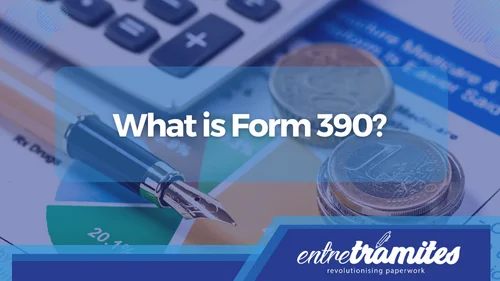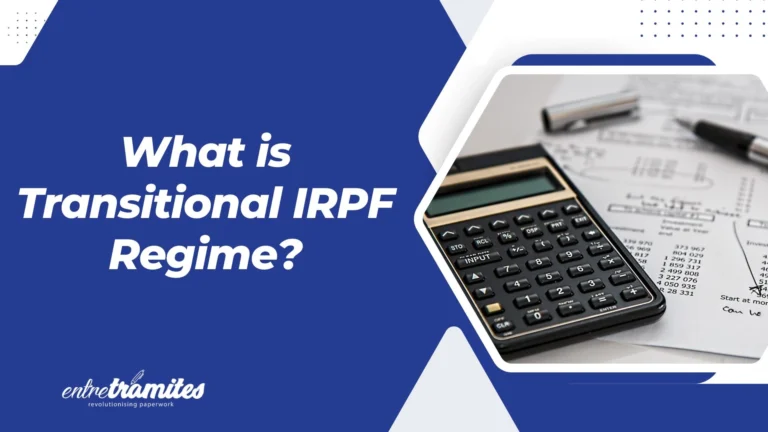It is an informative declaration of an annual summary of the operations related to the settlement of VAT. It is the extended annual equivalent of Form 303, which is filed at the close of the accounts for each financial year.
As it is purely informative form, there are no charges. However, it is mandatory for self-employed workers and SMEs to demonstrate their correlation with the quarterly forms through the annual summary.
Who is obliged to present Form 390?
This declaration must be made by any professional or businessman who carries out an activity subject to VAT. It should be added that since 2014, self-employed workers whose activity is taxed in modules and those dedicated to the leasing of urban real estate have been exempt from submitting form 390.
In addition, since January 1, 2017, large companies, VAT groups and those companies registered in the monthly VAT refund regime are not required to present form 390, because the Tax Agency has its registration books for tax.
Note: the deadline for submitting form 390 of the annual VAT summary is from January 1st to January 30th of the year following the fiscal year.
How to file Form 390?
You can present VAT form 390 online at the Tax Agency Electronic Headquarters with a digital certificate, using your personal electronic certificate or through your Cl@ve PIN.
For their part, the self-employed individual must have the information indicated below to complete and organize the annual VAT summary:
- Values between the tax base and the value of the VAT quota.
- VAT tax rate: 4%,10%,21%.
- Origin of income or expenditure, in other words, whether it is national, intra-community or extra-community.
- Differentiate between current expenses or investment goods. It is important to keep in mind that the latter is considered an expense if its amount is less than 600 euros.
Data identifying the taxpayer
This section specifies the NIF and the name of the self-employed individual or the company, as well as being in some of the excluded groups.
Accrual (Devengo)
At this point, the exercise is detailed and specifies whether the tax return is a substitute tax return.
Statistical data
Here a list of activities referred to in the declaration is made, with code and heading of the IAE, from most to least important depending on the volume of operations.
Representative details
This section should only be completed if you are acting on behalf of a third party.
VAT accrued (IVA devengado)
In this module, the VAT accrued (the income from your activity) is entered, broken down by the type of operation carried out in the General Regime and the type of VAT that is applied to it. Although the self-employed in this module are not required to present form 390, because the exclusion is conditional on compliance with the information in form 303 for the fourth quarter.
Deductible VAT
In this section, you will be able to know the result of calculating the sum of all the deductible VAT and, in turn, the difference between the VAT accrued and the deductible VAT.
Annual settlement result
This point is for the self-employed who pay taxes only to the State Administration with the exception of the regional communities of Navarra and the Basque Country, which have different tax regimes.
Result of settlements
In this section two spaces are differentiated:
- For those periods that are not taxed under the Special Regime of the Group of Entities (REGE).
- For those professionals and businessmen who do belong to this Regime.
Group of entities:
This is formed by a dominant entity that has links with other dependent entities and whose objective is the joint VAT declaration.
Volume operations
In this section you must be very careful with the details of operations in the General Regime since there are two exclusions:
- Operations are carried out in fixed establishments located outside the territory of the application of VAT, as long as the costs are not supported by establishments located in the same territory.
- The self-consumption of goods is detailed in letters c and d of number 1 of article 9 of the VAT law.
Specific operations
Acquisitions of goods or services from which you cannot deduct VAT are recorded here.
Prorrata
In it they will specify the following fields:
- Economic activity and CNAE code.
- Total amount of operations.
- Amount of operations with the right to deduction.
- The type of prorrata and its percentage.
Activities with differentiated deduction regimes
This last module includes the activities with differentiated deduction regimes and breaks down the deductible VAT in each operation.
Do you need more information about VAT settlements?
At Entre Trámites we offer various services of management, advice, and support in bureaucratic procedures for self-employed, SMEs, and other types of companies. Contact us! Through our contact form, you can leave your details for us to call you, schedule a free consultation, or simply text our WhatsApp.





